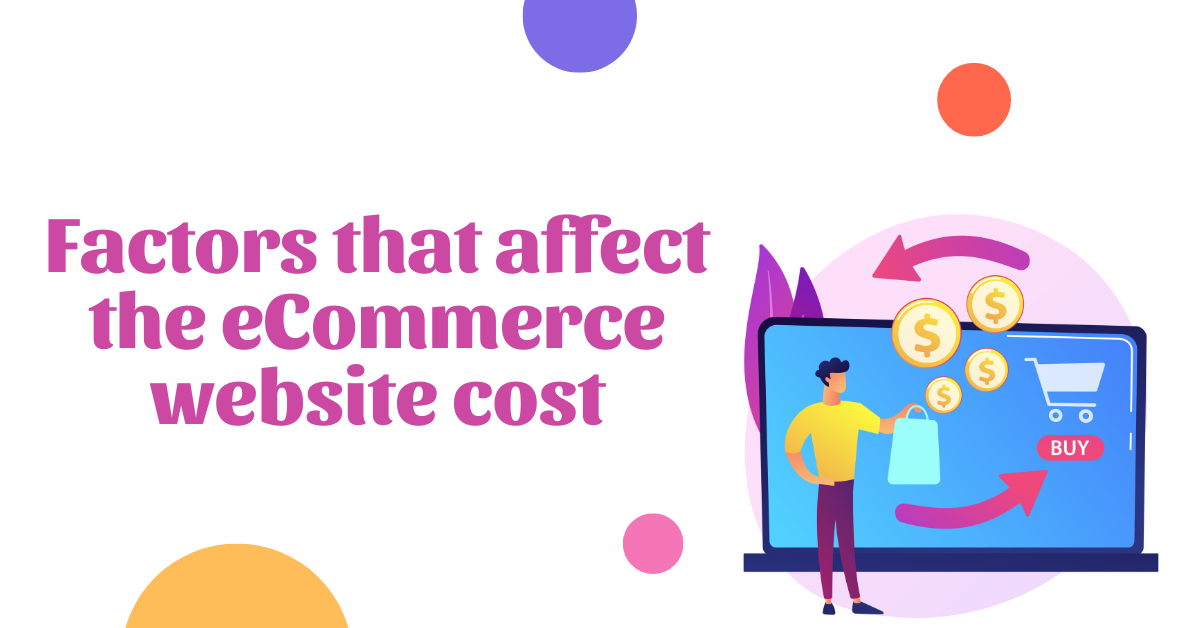When you are ready to take your business online, one of the biggest decisions you’ll have to make is how much to invest in an eCommerce website.
The cost of an eCommerce website can vary dramatically, depending on the scope of the project and the features you need. It is important to understand the factors that influence eCommerce website costs in order to make an informed decision about your investment.
In this blog, we’ll walk you through the factors that affect eCommerce website costs. We’ll explore different platforms and hosting options, the cost of design and development, maintenance and security, features and functionality, and marketing and advertising.
We’ll also provide some tips on how to keep your eCommerce website costs low without sacrificing quality.
How Much Does an eCommerce Website Cost?
The cost of an eCommerce website depends on a variety of factors, including the size and scope of the project, the features you need, and the platforms and hosting you choose. In general, you can expect to pay anywhere from $2,000 to $100,000 for an eCommerce website, depending on these factors.
The cost of an eCommerce website is often a deterrent for small businesses and entrepreneurs who are just starting. But it is important to understand that investing in a quality eCommerce website is a critical component of success.
A well-designed, user-friendly website can help you generate more sales, build relationships with customers, and increase brand recognition.

Factors That Influence eCommerce Website Costs
As you plan your eCommerce website, there are key factors to consider that will affect the cost of the project. Some of these are platforms and hosting, design and development, maintenance and security, features and functionality, and marketing and advertising.
Let’s take a look at each of these factors in more detail.
1. Platforms and Hosting
The first factor that affects the cost of your eCommerce website is the platform and hosting you choose. There are a number of different platforms and hosting options available, from self-hosted solutions like WordPress and Magento to hosted solutions like Shopify and BigCommerce.
The cost of these platforms and hosting options can vary significantly. For example, WordPress is a free, open-source platform, but you may need to invest in additional plugins and hosting to get the features you need. On the other hand, Shopify and BigCommerce are monthly subscription-based services that come with a range of features and hosting.
Your choice of platform and hosting will also affect the cost of design and development, as different platforms require different levels of expertise and coding knowledge.
2. Design and Development
The cost of design and development is one of the most significant factors that affect the cost of an eCommerce website. This cost includes everything from designing the website’s look and feels to coding the features and functionality.
The cost of design and development depends on a variety of factors, including the complexity of the project, the experience level of the designer or developer, and the platform you choose. If you are working with a designer or developer, you’ll also need to factor in their hourly rate.
3. Maintenance and Security
Another important factor that affects the cost of an eCommerce website is maintenance and security. Having a secure website is essential to protect your customers’ data and your business’s reputation.
The cost of maintenance and security depends on the platform you choose. For example, a self-hosted platform like WordPress will require more maintenance, as you’ll need to keep the software and plugins up to date. On the other hand, a hosted platform like Shopify will take care of the maintenance and security for you.
4. Features and Functionality
The cost of an eCommerce website is also affected by the features and functionality you need. This includes everything from product catalogues and shopping carts to payment processing and customer reviews.
The cost of these features and functionality depends on the platform you choose and the complexity of the project. If you are working with a designer or developer, you’ll also need to factor in their hourly rate.
5. Marketing and Advertising
Finally, the cost of an eCommerce website is also affected by marketing and advertising. This includes everything from search engine optimization (SEO) to pay-per-click (PPC) campaigns and social media marketing.
The cost of marketing and advertising depends on the complexity of the project and the platform you choose. For example, a self-hosted platform like WordPress may require more marketing and advertising, as you’ll need to set up the campaigns yourself.
On the other hand, a hosted platform like Shopify may include some basic marketing and advertising features.
6. Integration with External Systems
Integrating with external systems is also an important factor that affects eCommerce website costs. This includes integrating with payment gateways, shipping carriers, CRM systems, and more.
The cost of integrating with external systems depends on the complexity of the project, the platform you choose, and the experience level of the designer or developer. If you’re working with a designer or developer, you’ll also need to factor in their hourly rate.
7. Payment Processing and Security
Finally, payment processing and security are other factors that affect eCommerce website costs. Ensuring that your customer’s payment information is secure is essential to protect your business’s reputation.
The cost of payment processing and security depends on the platform you choose and the payment gateway you select. Some platforms may include basic payment processing features, while others may require additional plugins or services.

Tips for Keeping Your Ecommerce Website Costs Low
Now that you understand the factors that affect eCommerce website costs, here are some tips on how to keep your website costs low without sacrificing quality:
- Choose a platform that meets your needs: Select a platform that has the features and functionality you need rather than one with too many bells and whistles.
- Shop around for hosting: Compare different hosting providers to find the best deal for your budget.
- Consider open-source solutions: Open-source solutions like WordPress can be a great way to keep your costs low, but you’ll need to invest in additional plugins and hosts.
- Use templates: Templates can be a great way to save money on design and development costs.
- Use DIY solutions: If you are comfortable with technology, you can save money by doing some of the work yourself.
- Consider outsourcing: Hiring a freelancer or agency can be a great way to get the features and functionality you need without breaking the bank.
- Invest in marketing and advertising: Investing in marketing and advertising is essential to get your website seen and generate sales.

How much does an eCommerce website cost?
Building an eCommerce website is an investment in your business’s success.
When planning your website, it is important to understand the factors that influence eCommerce website costs: platforms and hosting, design and development, maintenance and security, features and functionality, and marketing and advertising.
By understanding these factors, you can make an informed decision about your investment and ensure that you get the most out of your eCommerce website. Suppose you are looking for ways to keep your eCommerce website costs low, consider selecting a platform that meets your needs, shopping around for hosting, using templates, and investing in marketing and advertising.
With a little bit of research and planning, you can create an eCommerce website that fits your budget and meets your business needs. You can also hire the best eCommerce website development company to help you build.
So don’t let the cost of an eCommerce website keep you from taking your business online. With the right strategy, you can create an eCommerce website that’s both cost-effective and high-quality.

Pramesh Jain, CEO, and TechnoPreneur, at WebMob Technologies, has an experience of over 12 years. He is the intellectual head of software solutions with expertise in client acquisition, project inception, & strategic application growth development. Embracing every software trend and developing seamless applications is his passion.


